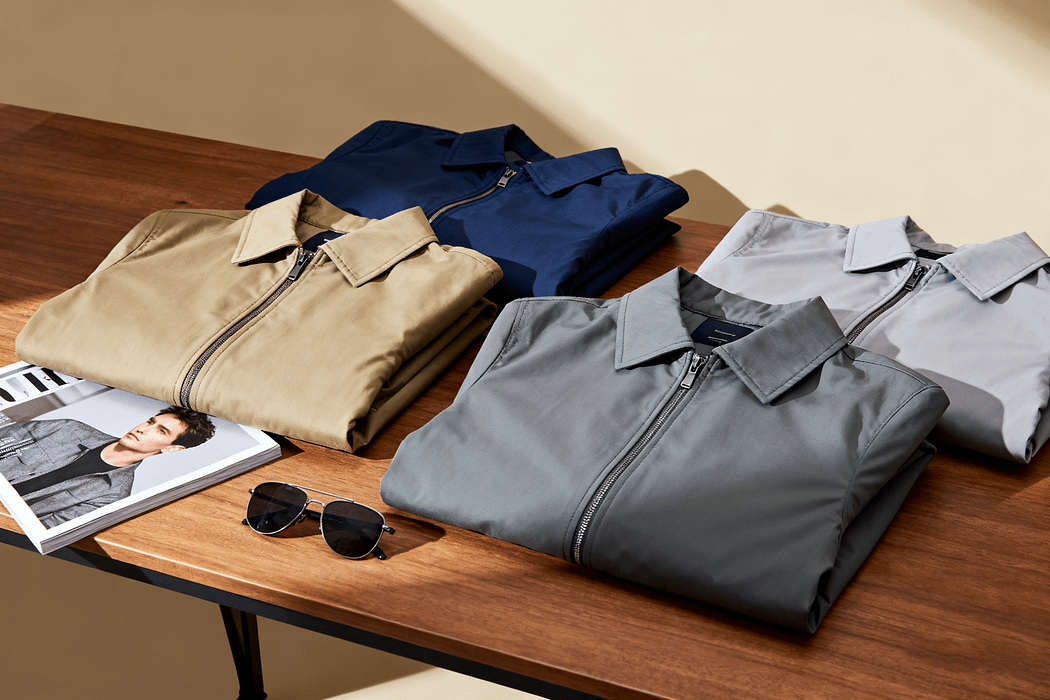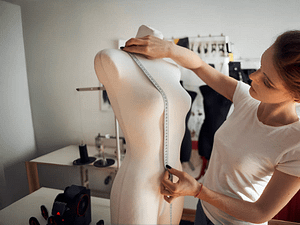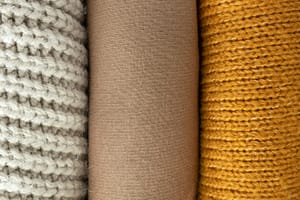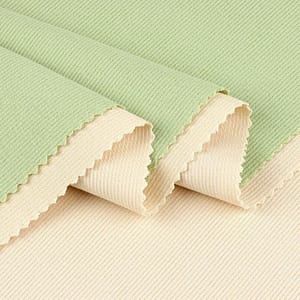Introduction
Men’s casual jackets are a core item in modern wardrobes, bridging the gap between practicality and style. Their versatility makes them one of the most consistent performers in retail, appealing to a wide demographic of consumers across seasons. For this reason, brands and independent retailers must approach sourcing decisions with careful attention to both current trends and long-term consumer expectations.
Beyond style, the right purchasing strategy ensures jackets deliver on comfort, durability, and value. A well-selected range not only drives sales but also reinforces brand reputation, reduces returns, and builds customer loyalty. The following five factors highlight the most important considerations for retailers when investing in men’s casual jackets.
Fit and Sizing Considerations
Fit remains one of the most decisive factors in how consumers judge the value of a jacket. No matter how stylish or well-made the piece is, poor fit can lead to dissatisfaction and high return rates. For brands and independent retailers, aligning sizing standards with consumer expectations is essential for sales success and customer loyalty.
- Consumer Expectations for Fit: Men’s casual jackets need to accommodate a variety of body types and preferences. Slim and tailored fits appeal to fashion-forward customers, while regular or relaxed fits often suit broader markets. Offering a balanced mix ensures a wider reach and stronger sales potential.
- Standardized Sizing vs. Inclusive Options: The industry is steadily shifting toward more inclusive sizing, reflecting the diversity of modern consumers. Retailers who provide extended size ranges are not only expanding their target audience but also positioning themselves as forward-thinking and inclusive.
- Consistency Across Collections: Uniform sizing across different jacket styles within the same brand is critical. A “Medium” in one style should not feel like a “Large” in another. Inconsistent sizing frustrates customers and can lead to negative feedback and brand distrust.
- Sizing Systems for Online Retail: With online sales continuing to grow, precise sizing information has become indispensable. Retailers should provide detailed measurement charts, fit guides, and where possible, tools like digital try-on features. This level of clarity minimizes returns and enhances the customer’s online shopping experience.
For brands sourcing from manufacturers, early communication about grading rules and fit standards is crucial. By ensuring consistency and accuracy in sizing, retailers can reduce risks, streamline inventory, and deliver products that consistently meet customer expectations.

Design Trends and Versatility
Design is often the first element that attracts a customer’s attention, but versatility determines how often the jacket will be worn. For brands and retailers, balancing trend-driven designs with timeless appeal is crucial to ensure strong sell-through rates and reduce excess inventory.
- Market Trends: Current preferences in men’s casual jackets lean toward relaxed silhouettes, minimalist detailing, and hybrid styles that merge casual comfort with a polished look. Oversized bomber jackets, utility-inspired field jackets, and lightweight shirt-jackets are notable examples gaining traction across different demographics.
- Versatility Across Occasions: Jackets that transition seamlessly from casual to semi-formal settings offer higher value to consumers. For retailers, versatile designs broaden the target market and increase the likelihood of repeat wear, which enhances customer satisfaction and loyalty.
- Customizable Design Elements: Features such as detachable hoods, removable linings, or adjustable cuffs add functional value without compromising style. These options allow retailers to position products as adaptable to various climates or personal preferences, boosting their appeal in diverse markets.
- Color and Pattern Trends: Neutral shades like black, navy, and gray remain consistent bestsellers, while muted earth tones (olive, beige, brown) continue to trend. Limited runs of bold colors or patterns can attract attention, but maintaining a strong base of versatile neutrals is key for dependable sales.
Retailers who source designs that strike the right balance between trend and practicality can reduce markdown risks and strengthen their positioning in the market. By offering a range that feels both current and enduring, brands can maximize appeal to style-conscious yet practical consumers.

Functionality and Technical Features
While style draws initial interest, functionality determines long-term satisfaction. Modern consumers expect casual jackets to deliver more than just appearance; they want features that adapt to their daily lives and environments. For retailers, offering jackets with practical benefits can significantly enhance product value and competitiveness.
- Innovation in Functionality: Technical details such as water resistance, windproof finishes, and breathable linings elevate casual jackets beyond simple fashion items. These features allow retailers to market products as both stylish and performance-driven.
- Consumer Demand for Practicality: Features like multiple interior and exterior pockets, adjustable hoods, and elasticized cuffs make jackets more useful for everyday wear. With consumers increasingly favoring multipurpose products, functionality often becomes a key deciding factor at the point of purchase.
- Material Innovation: Advanced fabrics — from recycled polyester blends to performance textiles like Gore-Tex — combine durability with comfort. For retailers, offering jackets with such materials provides an opportunity to tap into the growing demand for sustainable yet high-performing outerwear.
- Technology Integration: Though still emerging, jackets with smart features (such as built-in heating systems, UV protection, or device-compatible storage) are gaining attention. While not yet mainstream, they signal a direction that forward-thinking retailers may consider for differentiation in the near future.
By focusing on functionality, retailers can position their jackets as reliable investments rather than short-lived fashion purchases. Products that combine practicality with style not only meet current consumer expectations but also reinforce long-term brand value.

Brand Reputation, Pricing, and Market Positioning
Beyond fit, fabric, design, and functionality, a jacket’s success in the market is also shaped by how it is positioned and the reputation behind it. For retailers, aligning with manufacturers and suppliers who can deliver consistent quality is essential for maintaining credibility and profitability.
- Establishing a Strong Brand Identity: Jackets that consistently meet expectations for quality, comfort, and style reinforce a brand’s identity in the consumer’s mind. Retailers who source from manufacturers with proven expertise can better safeguard their reputation and build long-term trust.
- Balancing Cost and Quality: Price is often the deciding factor for many consumers, but it must reflect the perceived value of the product. Retailers should weigh the benefits of investing in higher-quality manufacturing — which leads to longer-lasting garments and fewer returns — against the risks of cutting costs and compromising durability.
- Market Positioning and Price Strategy: Jackets can be positioned across different tiers — from premium to mid-range to budget-friendly. Retailers need to define their target demographic clearly and source accordingly, ensuring that design and material choices align with the intended price point.
- Sustainability and Ethical Manufacturing: Consumers are increasingly attentive to how and where their clothing is produced. Retailers who partner with manufacturers that prioritize ethical labor practices and eco-friendly production gain not only a competitive advantage but also long-term loyalty from socially conscious customers.
Ultimately, the reputation of both the retailer and the manufacturing partner plays a decisive role in consumer trust. By carefully balancing pricing strategies with quality and ethical considerations, retailers can position their jacket collections to succeed in an increasingly competitive market.

Conclusion
Men’s casual jackets remain a vital category for retailers, offering the right balance of style, versatility, and practicality. By focusing on the five essential factors — fit and sizing, fabric quality, design versatility, functionality, and market positioning — brands and independent retailers can make more informed purchasing decisions that not only meet consumer expectations but also support long-term growth.
Success in this category requires more than following trends; it depends on consistent quality, reliable sourcing, and strategic product planning. Retailers who invest in jackets that combine durability with design appeal are better equipped to reduce return rates, strengthen brand reputation, and build customer loyalty in a competitive market.
At GOPHERWOOD, we specialize in B2B cross-border manufacturing for apparel brands worldwide, with a strong focus on men’s casual jackets. By combining high-quality materials, precise craftsmanship, and flexible production solutions, we help our partners deliver collections that stand out in both style and performance. If you’re looking for a trusted manufacturing partner to support your brand’s growth, GOPHERWOOD is ready to collaborate.






